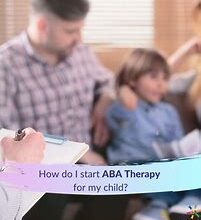
If you are curious about distinctive approaches to improve behavioral patterns, then you might be interested in this write-up. This piece unravels the mystery behind a remarkable method that makes an immense difference in people’s lives, primarily those with behavioral disorders. In the following paragraphs, we will delve into the principles of this remarkable method, its practices, and We will dispel common misconceptions and equip you with the knowledge to make informed decisions.
Applied Behavior Analysis, better known as its acronym ABA, is a systematic and scientifically validated approach to understanding and affecting positive changes in socially significant behaviors. It has been proven effective especially amongst individuals with autism spectrum disorder and other developmental conditions. But before we journey into the of this subject, let’s familiarize ourselves with some basic terminologies and concepts.
Continuing on to the broader perspective, the underlying philosophy of ABA is rooted in the belief that the desired behavior can be developed through a system of rewards and consequences. It emanates from the simple that concrete reinforcements can help to produce positive and meaningful changes in behavior.
So, why should the denizens of the Centennial State Metropolis care? Well, it’s about equipping yourself with the knowledge beneficial for your community. Some individuals on your block, office or even in your family might be benefiting from ABA now. Understanding it can make you a more sensitive, supportive, and inclusive community member.
Getting to Know Analysis of Behavior

This passage provides a broad and comprehensive view of what constitutes analysis of behavior – a remedy frequently used in the management of Autism Spectrum Disorders (ASD). This entails a systematic means of modifying undesirable behavior by employing positive reinforcement. It is a technique often used in on the autism spectrum to help them acquire new skills and improve their overall quality of life.
| Aspect | Description |
|---|---|
| Focus of Analysis | Used for amending undesirable behavior by applying positive reinforcement. |
| Desired Result | Aim of enabling the acquisition of new skills and the betterment of life quality. |
Setting up the process of behavior analysis is facilitated by observing the individual in their native surroundings. This approach assists practitioners to understand, predict, and change behavior. This form of therapy is based on the science of learning and behavior, which aids in our of how behavior works, how learning takes place, and how conditions or situation affect behavior.
The characteristics of behavior analysis make it very effective, especially for people on the autism spectrum who have difficulties in communication, social skills and adaptive skills. The analysis of behavior treatment approach is tailored to meet the individual’s needs substantially increase the chances of them leading a more fulfilling and self-sufficient life.
Overview of principles and techniques used in Applied Behavioral Analysis
In this section, we will immerse ourselves in the foundational constructs and methods anchored in Applied Behavioral Analysis. The primary focus points are the core principles, critical techniques in the practice, and the ultimate relevance they hold in this specific scientific discipline.
Core Principles of Applied Behavioral Analysis

At the heart of Applied Behavioral Analysis lies a few essential ideologies. The fundamental tenet is the belief that behaviors are a result of the environment and can be modified through systematic manipulations. Hence, should aim to establish functional relationships between environmental settings and responses.
Key Techniques in Applied Behavioral Analysis
Fostering this functional understanding requires specific strategies. One such technique is Discrete Trial Training (DTT), which involves breaking down complex skills into smaller, teachable ones. It relies heavily on the principle of positive the increased likelihood of a behavior to reoccur as a result of a favorable outcome or reward.
Another technique is Incidental Teaching, which utilizes naturally occurring opportunities to teach skills. For instance, while a child is playing, an analyst may use this context to teach appropriate play behaviors or social interaction skills. This method embraces the concept of by doing” and underscores the significance of relevance and context in behavior modification.
The principles and strategies embedded in Applied Behavioral Analysis are not merely independent constructs; they intertwine and interact to constitute an effective framework for understanding and influencing behavior. these elements is indeed instrumental in appreciating the full scope of this scientific discipline.
Advantages of Applied Behaviour Analysis Methods
This section aims to appraise the readers about the numerous advantages of Applied Behaviour Analysis (ABA). Designed to foster critical skills and improve behaviours, this behaviour-based treatment myriad benefits to individuals with autism and other disorders over a broad range of settings.
a closer look at why the application of this method is significant:
- It teaches practical skills: A significant advantage of this treatment is its practical approach. As it breaks larger skills into smaller ones, learning becomes more manageable, particularly for those with autism and developmental disorders.
- Prioritises the individual: The strategies involved in this process are tailor-made considering the unique needs of the individual under treatment. This form of customisation ensures effective learning and behavioural change.
- Streamlines learning process: By reinforcing the desired behaviours and diminishing the problematic ones, this method simplifies the learning procedure, thereby improving the adaptive learning skills of the individuals.
Ultimately, the applied behaviour analysis approach provides key life skills and promotes better behaviour, invariably improving the quality of life for those under its treatment. Be it in home classrooms, or communities, the advantages of applying such a method are tangible and far-reaching.



